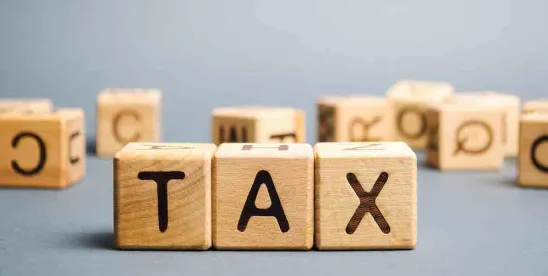The One Big Beautiful Bill (OBBB) cements many individual tax provisions from the 2017 Tax Cuts and Jobs Act (TCJA) including permanent lower income tax rates and a doubled standard deduction. The bill passed on July 3 and is expected to be signed by President Donald Trump by July 4. It introduces new and expanded deductions—such as a $6,000 senior deduction and a temporary deduction for U.S.-assembled auto loans—while increasing the SALT cap (for now) and enhancing the child tax credit.
Taxpayers and planners alike will want to take note of what's here to stay, what’s changing, and what’s expiring. Our tax attorneys break it all down in this comprehensive summary.
Marginal Tax Rates
The OBBB makes permanent the individual tax rates from the 2017 TCJA, which are 10%, 12%, 22%, 24% 32%, 35% and 37%). Prior to the TCJA, they were 10%, 15%, 25%, 28%, 33% 35%, and 39.6%). In addition, the TCJA increased the ranges of each bracket subject to the new rates.
The TCJA had mostly eliminated the “marriage penalty” which resulted when two people paid more income tax as a married couple than they would have paid if they stayed single.
The rates for net capital gains and qualified divided did not change under the TCJA (0%, 15%, 20%), but the ranges were modified.
Standard Deduction
Taxpayers who choose not to itemize their deductions may instead take the standard deduction: a fixed dollar amount that taxpayers subtract from their adjusted gross income to reduce their federal taxable income. The TCJA nearly doubled the standard deduction for individual filers, joint returners, and heads of household, further reducing their federal taxable income. The TCJA also updated the measure used for inflation indexing to make the standard deduction more accurate.
The OBBB makes permanent the doubled standard deduction from the TCJA and the updated inflation indexing measure. The House version of the OBBB had proposed a temporary increase in the standard deduction by $1,000 for individual filers and $2,000 for joint filers, but the final version of the OBBB did not include this.
Taxpayers will usually benefit from choosing the standard deduction over itemized deductions, because itemized deductions usually do not exceed the standard deduction and the documentation requirements of itemized deductions are harder to meet.
State and Local Tax (SALT) Deductions
Historically, taxpayers could deduct all their state and local taxes paid (SALT) from their federal taxable income. The TCJA capped the SALT deduction at $10,000 through 2025, causing much angst in high-tax states like Illinois, New York, and California.
The OBBB increases the SALT cap to $40,000 for 2025, with a 1% increase 2026 through 2029. In 2029, the SALT cap returns to $10,000.
There is a phasedown of the cap for households with incomes at or above $500,000. Specifically, the deduction phases down by 30% until it reaches $10,000. The threshold $500,000 amount will increase by 1% each year.
Personal Exemption
Prior to the TCJA, taxpayers with income amounts below certain thresholds were entitled to additional deductions known as personal exemptions, in addition to either the standard or itemized deductions. The personal exemption amount was based on the number of people claimed on the return, such as a taxpayer, spouse and dependents. The TCJA suspended the deduction for personal exemptions until 2026. The OBBB permanently terminates the deduction for personal exemptions, so taxpayers will not see a change in this tax policy.
Child Tax Credit
Historically, taxpayers benefitted from child tax credit based on the number of children they have. The TCJA temporarily doubled the maximum child tax credit to $2,000 per child under 17 with a Social Security Number (“SSN”) through 2025. Only a portion of the credit was refundable (currently $1,700). This means that low-income families would not receive the whole credit if they did not owe at least $1,700 in federal income taxes.
Also, under the TCJA, only individual taxpayers with an annual income at or below $200,000 or married taxpayers with an annual income at or below $400,000 could receive the full credit amount. The TCJA also added a temporary $500 nonrefundable credit for children ineligible for the $2,000 credit.
The OBBB increases the child tax credit by $200 for a maximum of $2,200 per child, though the credit will be indexed for inflation beginning in 2026. The $200 increase was added only to the nonrefundable portion of the credit, which means it only helps families who already owe enough taxes or qualify for the full amount.
Under the OBBB, the credit will now require the taxpayer (or a spouse) to have an SSN, in addition to the existing requirement for a child to have a social security number
Alternative Minimum Tax
When taxpayers complete their federal tax return each year, they must compare their tax liability under the regular tax system to the alternative minimum tax (AMT) liability and pay the higher of the two. This process ensures that high-income households pay a minimum amount of federal income tax, regardless of the deductions and credits they may be able to claim under the regular tax system.
The TCJA significantly increased the exemption amounts and raised the income phase-out thresholds for when the AMT applies, lowering the likelihood of a taxpayer paying taxes under the AMT system. Joint filers making under $1,000,000 were exempt. Under the OBBB, this increase in the AMT exemption is made permanent.
Enhanced Deductions for Seniors
Under the TCJA, people over 65 were given an additional deduction stacked on the standard deduction. The amount of the extra standard deduction varied based on factors such as filing status and whether the taxpayer or their spouse is 65 or older.
The OBBB now allows taxpayers aged 65 or older to deduct an additional $6,000 from their taxable income through 2028. The deduction phases out at a 6% rate for individual filers whose income is more than $75,000 or joint filers whose income exceeds $150,000, fully phasing out at $175,000 for individual filers and $250,000 for joint filers. The deduction is available whether a taxpayer takes the standard deduction or itemizes their deductions. Taxpayers and their spouses must provide their SSN to claim the deduction.
This provision was added because the tax on Social Security benefits could not be removed in a reconciliation bill under the rules of the Senate.
Auto Loan Interest Deduction
The OBBB implements a new, temporary tax provision allowing taxpayers, whether taking the standard deduction or itemizing, to deduct up to $10,000 for certain auto loans on vehicles assembled in the United States through 2028. ATVs, trailers, and campers are not eligible for the deduction. Final assembly of the vehicle must occur in the United States.
To qualify for the deduction, the loan must be the vehicle’s first and the taxpayer must be the original owner. The deduction phases out at a rate of $200 for each $1,000 of income earned above $100,000 ($200,000 for joint filers).





 />i
/>i
